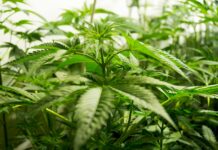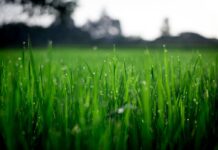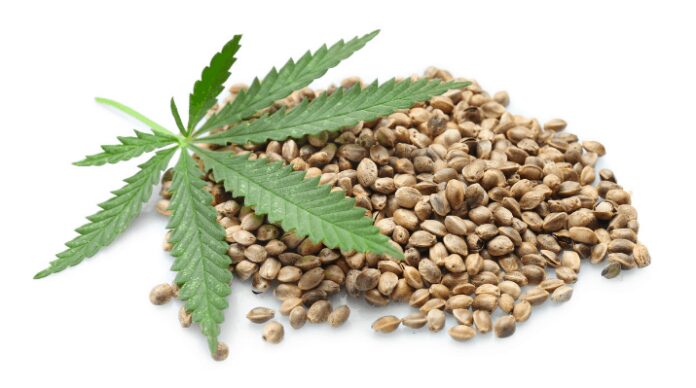
Many states have legalized marijuana for personal use, and experts predict more will follow. While cannabis remains illegal under federal law, the United States government rarely prosecutes individuals for cultivating marijuana for personal use. If you wish to try growing plants at home, you must select the right seeds. Suppliers offer three types of cannabis seeds today, and a grower must know which is appropriate for their needs. In addition, they offer multiple strains.
1. Conventional Seeds
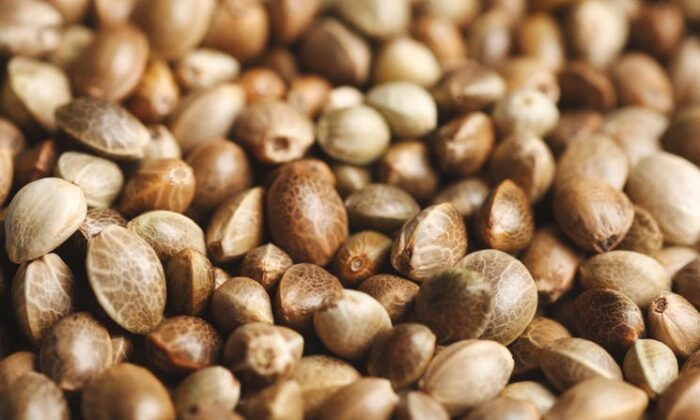
Breeders create conventional seeds by crossing a male and female plant. The plants produced with these seeds can be male or female. Growers cannot know how many male and female plants they have until the plants reach the flowering stage. The sex then becomes apparent.
Female plants produce the buds individuals desire from their marijuana plants. According to weed-seeds.com, when researching marijuana seeds available online, know that female seeds produce buds while male plants produce other desirable products. However, the plants need to remain separated.
Growers must remove male plants to ensure pollination doesn’t occur. If this process takes place, the female plants turn the focus to making seeds. Bud production decreases, and any buds produced are of lower quality. However, under certain conditions, growers may wish to keep male plants.
For example, hemp products benefit from the soft and durable fiber produced by male cannabis plants. In addition, the aromatic oils produced by the male plant help with pest control in a garden. Breeders often grow male plants so they can experiment with new strains, as well.
2. Feminized Seeds
Individuals growing cannabis for consumption often turn to feminized seeds. These seeds only produce female plants, so the grower won’t need to remove male plants before pollination to prevent seedy buds.
To create feminized seeds, breeders introduce light to the plant at certain times during the flowering stage. This altered light schedule leads to the female plant producing male flowers. Another option involves using colloidal silver to create a chemical change in the female. This chemical change leads to the female plant producing male flowers containing pollen.
The breeder then takes this pollen to pollinate female flowers. As the pollen comes from a plant that is technically female, the offspring are all female. However, breeders often need to complete this process several times to ensure all seeds are feminized.
Feminized seeds create a crop of unfertilized females. These females devote their energy to producing buds packed with Sensemilla. The resinous buds serve as highly concentrated forms of marijuana. Furthermore, growers find they need less space to grow their crops, as there are no male plants taking up valuable space in the plot.
3. Autoflowering Seeds
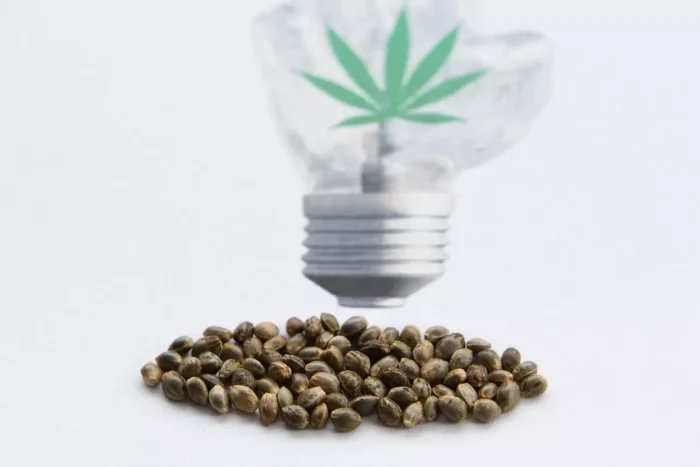
Men and women growing cannabis indoors often turn to autoflowering seeds. These seeds start and finish the flowering stage independent of light cycles. Growers need less light when cultivating the seeds, and beginners find they are easy to grow. These seeds also take less time to harvest, which new growers appreciate. They cannot wait to try their homegrown marijuana, and autoflowering seeds allow them to do so in less time.
Breeders create autoflowering seeds by crossing the desired strain with a Cannabis Ruderalis strain. Most marijuana users have some familiarity with Indica and Sativa strains. Cannabis Ruderalis grows near the North and South Poles. Because of the shorter growing seasons in these parts of the world, quick harvests become essential. Combining this strain with an Indica or Sativa strain shortens the growth cycle of the plant.
Growers often find they want seeds for different purposes. For example, a grower may want autoflowering seeds for a quick harvest but may also purchase conventional seeds to experiment with new strains. All three types of seeds produce cannabis, however, so there is no wrong choice. Whichever seed option is selected will result in the marijuana you desire. However, growers have another choice to make when purchasing seeds.
4. Strain Options
A grower must decide whether to buy an Indica strain, a Sativa one, or a hybrid. Each has its benefits and drawbacks that the grower must know before deciding which to purchase. The following information summarizes the similarities and differences between the Indica, Sativa, and hybrid strains.
5. Indica Strains
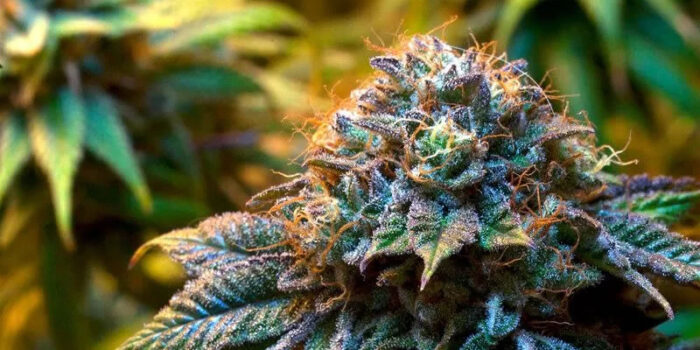
Indica strains get their name from their origins in India and nearby parts of Asia. Growers easily identify these plants by their broad leaves and dense branches. The conical shape serves as another clue the grower has an Indica strain growing. Individuals find these plants prefer cool highland areas when grown outdoors and a climate-controlled indoor grow room.
The cool temperatures preferred by the plan lead to dense resin and terpenes. These strains come with a heavy concentration of CBD, which helps to offset the THC content of the plant. For this reason, people growing marijuana for sedation and medical purposes often choose one of these strains.
People have been using Indica strains for many years now to treat congestion, bronchitis, and various skin conditions, thanks to their analgesic properties. However, they also boost the user’s intellectual focus and mental energy. A person won’t get high using these strains but will feel the effects in their legs and bodies. The main side effect is a dry mouth.
Cannabis strains that make one think of the earth and wood or a skunk are likely Indica plants. People often notice the aromas of rosemary and sage when using one of these strains.
6. Sativa Strains
Sativa strains prefer hot, dry climates and lots of sun. They are frequently grown in Africa, Central America, and parts of Asia. These plants grow tall and thin, and they feature leaves that resemble fingers. Some strains grow taller than 12 feet, but the plants take longer to mature than their Indica siblings.
People often choose a Sativa strain when they want the high people associate with marijuana. Plants with a Sativa lineage come with a higher concentration of THC and a lower concentration of CBD than Indica strains. Many people choose to use Sativa strains during the day, as they give the user a boost of energy while reducing their anxiety. People say they feel creative and productive when they use a Sativa strain of cannabis.
The aroma of a Sativa strain resembles that of diesel. Growers and users should not expect these plants or buds to have a sweet fruity smell or taste. The smell and taste are mild compared to Indica strains.
Medical practitioners often recommend Sativa strains for individuals struggling with ADD, ADHD, or HIV. Men and women struggling with chronic pain or multiple sclerosis often benefit from the use of Sativa strains of marijuana. However, anyone who has social anxiety should avoid these strains, as their use can lead to paranoia, panic attacks, and anxiety.
7. Hybrid Strains
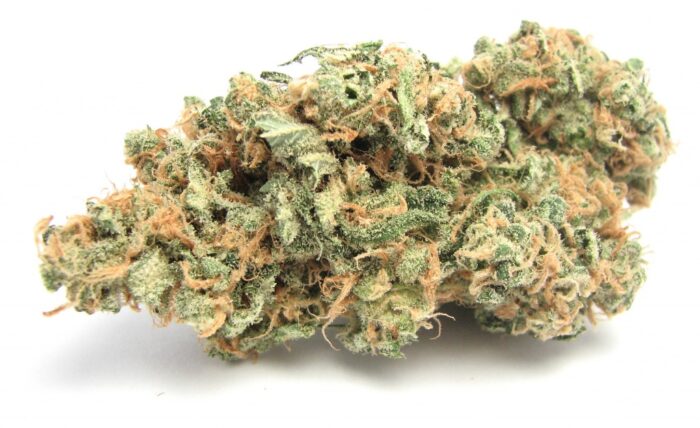
Hybrid strains are another option growers may wish to try, and growers create them through cross-breeding. Breeders combine Sativa and Indica plants to produce a specific effect, and the appearance of the plant varies by the combination of parent plants.
Breeders often combine strains to boost the percentage of THC in the finished product. Each hybrid comes with its own unique ratio of THC and CBD. Some strains reduce anxiety and stress, while others reduce the side effects of cancer treatment, for example.
Consider all options when purchasing cannabis seeds. A grower might find they have favorite strains they return to. However, a grower should try new strains, as they might find they have one or more new favorites. It never hurts to try something new, and a grower never loses when doing so. They learn from the growing process, even when the end result doesn’t satisfy them.

